



Table of Contents
- Introduction
- Wood Screws
- Machine Screws
- Sheet Metal Screws
- Self-Tapping Screws
- Drywall Screws
- Concrete Screws
- Lag Screws
- Hex Head Cap Screws
- Socket Screws (Allen Screws)
- Carriage Bolts
- Choosing the Right Screw for Your Project
- Conclusion
- Faq's
Introduction
Screws are essential fasteners used across various industries, including construction, woodworking, metalworking, and DIY projects. With different types of screws available, selecting the right one is crucial for ensuring strong, durable, and secure connections. Each screw type is designed for specific applications, materials, and load-bearing capacities, making it important to understand their unique features and best practices for use. In this comprehensive guide, we explore the most commonly used screws, their applications, and expert tips to help you make the right choice for any project.
Wood Screws
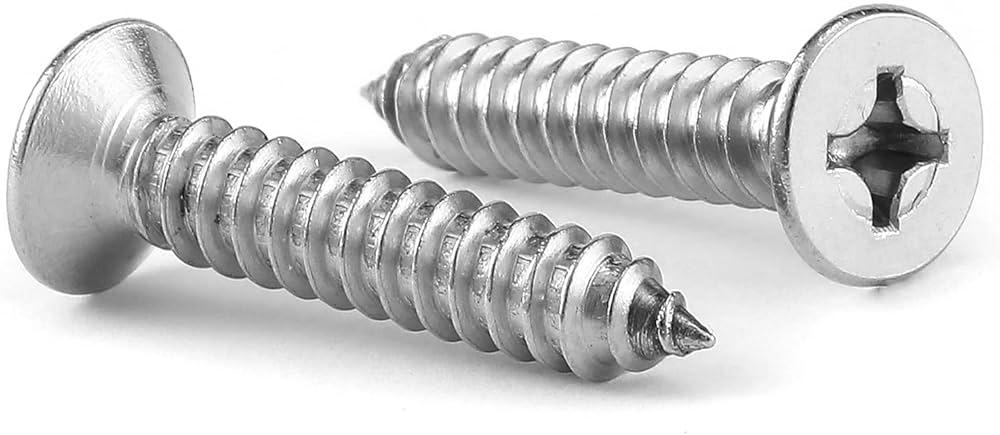 Wood Screws, Amazon
Wood Screws, Amazon
Description:
Wood screws are specifically designed for joining wooden materials. They feature a sharp point and coarse threads that taper along the shank, facilitating easy penetration into wood. These screws are typically made of brass, stainless steel, or carbon steel, providing durability and resistance to corrosion.
Applications:
- Furniture Assembly:
- Used for constructing chairs, tables, and beds to ensure stability.
- Provides strong, lasting joints that withstand repeated stress.
- Ideal for assembling both softwood and hardwood furniture.
- Cabinet Installation:
- Helps in securely fastening cabinets to walls or other wooden structures.
- Prevents loosening over time by providing a deep hold in wooden surfaces.
- Often used in kitchen cabinets, wardrobes, and storage units.
- General Carpentry:
- Used in wooden framing, paneling, and finishing work.
- Suitable for both interior and exterior wood applications.
- Ideal for wooden fences, door frames, and window casings.
Best Practices:
- Pilot Holes:
- Drill pilot holes before driving in large screws to prevent wood from splitting.
- The pilot hole size should be slightly smaller than the screw's core diameter.
- Countersinking:
- Ensures the screw head sits flush with or below the surface for a clean look.
- Prevents wood from cracking by reducing pressure at the screw entry point.
Also Read: Circuit Breaker Types & Their Uses: Everything You Need to Know
Machine Screws
 Machine Screws, Bolt Base
Machine Screws, Bolt Base
Machine screws are uniform in diameter along their entire length and are used with pre-threaded nuts or tapped holes. They have a variety of head styles, such as flat, round, pan, and hex heads, making them versatile for different applications.
Applications:
- Machinery Assembly:
- Commonly used in manufacturing and industrial equipment.
- Helps in securing parts in engines, turbines, and motorized systems.
- Provides strong and precise fastening for heavy-duty applications.
- Electronics:
- Used in assembling and securing electronic components such as circuit boards and casings.
- Small-sized machine screws are found in laptops, smartphones, and other electronic gadgets.
- Automotive Industry:
- Extensively used in vehicle assembly and repairs.
- Secures components like bumpers, engine covers, and dashboard panels.
Best Practices:
- Thread Matching:
- Ensure that the machine screw's thread matches perfectly with the nut or tapped hole to avoid misalignment.
- Torque Specifications:
- Always adhere to the recommended torque settings when tightening machine screws to prevent thread stripping.
Sheet Metal Screws
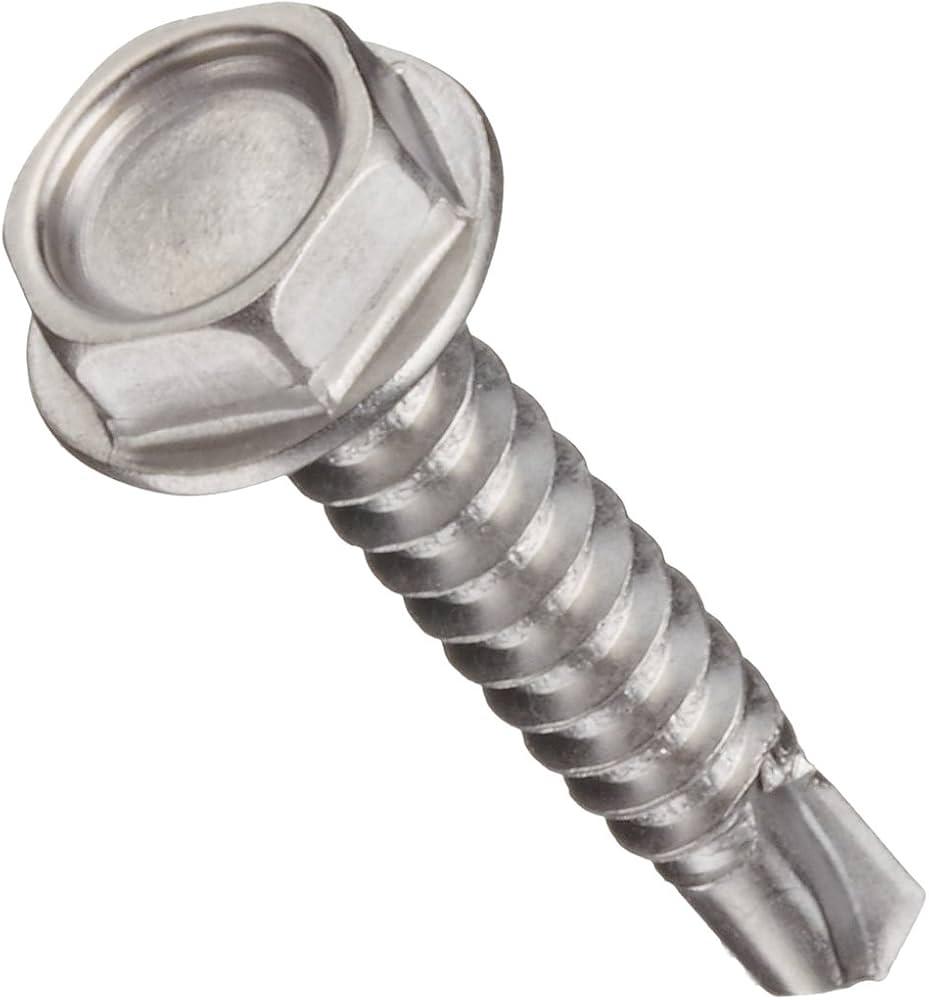 Sheet Metal Screws, Amazon
Sheet Metal Screws, Amazon
Sheet metal screws are specifically designed to fasten metal sheets. They have sharp threads that can cut through metal and other materials such as wood and plastic. These screws come in both self-tapping and self-drilling variations.
Applications:
- HVAC Systems:
- Used in securing metal ductwork for heating, ventilation, and air conditioning units.
- Ensures air-tight sealing of ventilation channels.
- Metal Fabrication:
- Provides firm attachment of metal sheets in structural or decorative fabrication.
- Commonly used in roofing, siding, and custom metal fabrication.
- Automotive Bodywork:
- Used for securing panels and assembling vehicle body parts.
- Found in car fenders, door frames, and undercarriage components.
Best Practices:
- Pre-drilling:
- Pre-drill holes, especially when using these screws in thick metals, to make insertion easier and prevent breakage.
- Material Compatibility:
- Choose screws that are resistant to corrosion and match the metal type to prevent galvanic corrosion.
Also Read: What Are Gusset Plates? Uses, Design, and Applications Explained
Self-Tapping Screws
Description:
Self-tapping screws are designed to create their own threads as they are driven into materials. These screws are available in two types:
- Standard self-tapping screws- Require a pre-drilled hole.
- Self-drilling screws- Feature a drill-like tip that eliminates the need for pre-drilling.
Applications:
- Plastic Assemblies:
- Ideal for fastening plastic components in automotive, furniture, and appliance industries.
- Provides a secure hold without the risk of cracking plastic surfaces.
- Thin Metal Sheets:
- Used to secure thin metal sheets in construction, roofing, and industrial applications.
- Ensures a tight grip without the need for welding.
- Woodworking:
- Commonly used where pre-drilling is not practical, such as in quick installations and DIY projects.
- Suitable for wood-to-wood and wood-to-metal fastening.
Best Practices:
- Material Thickness:
- Ensure that the material's thickness can support the length of the self-tapping screw for a strong grip.
- Avoid Over-tightening:
- Over-tightening can strip the threads and weaken the connection. Stop turning as soon as resistance is felt.
Drywall Screws
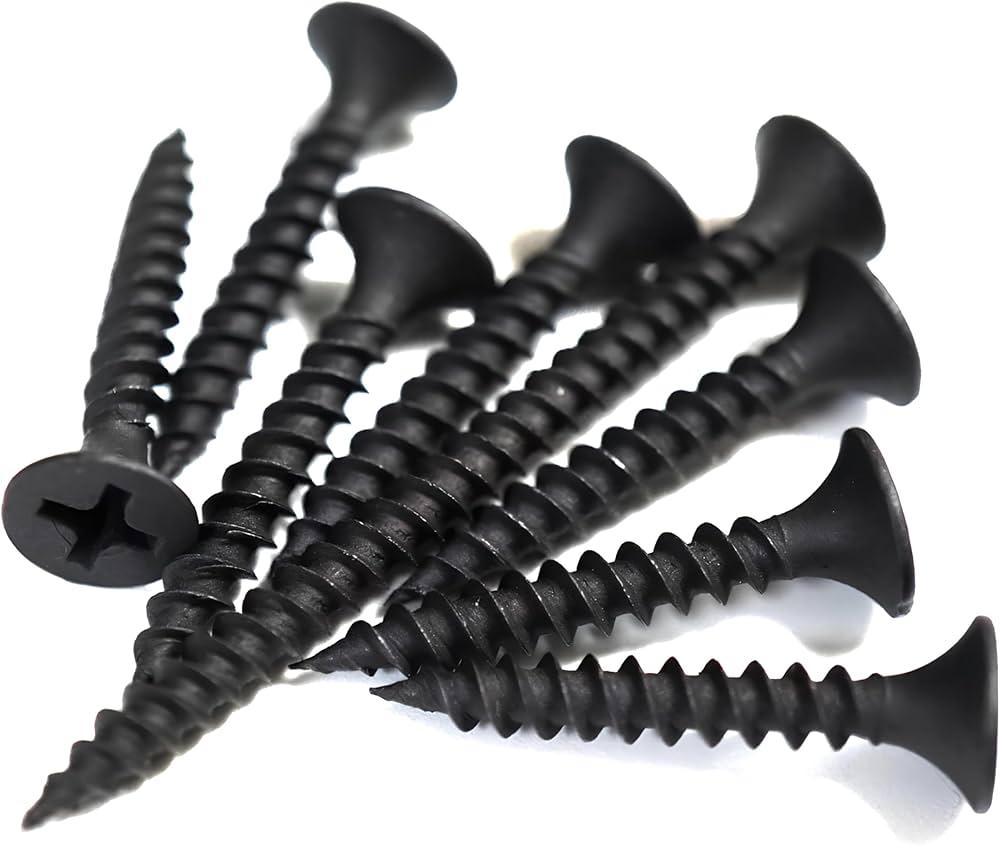 Drywall Screws, Amazon
Drywall Screws, Amazon
Description:
Drywall screws are specifically designed to fasten drywall panels to wood or metal studs. They have a bugle-shaped head that prevents damage to the drywall surface and allows for a flush finish.
Applications:
- Drywall Installation:
- Used for securing drywall sheets to wooden or metal framing.
- Ensures a smooth and firm attachment to prevent sagging.
- Ceiling Work:
- Helps in affixing ceiling drywall panels to joists without causing surface cracking.
- Provides a strong hold for overhead applications.
- Lightweight Fixtures:
- Ideal for mounting lightweight items like picture frames, shelves, and curtain rods onto drywall surfaces.
Best Practices:
- Screw Length:
- Choose a length that ensures at least 1 inch of penetration into the supporting stud to achieve a secure hold.
- Spacing:
- Maintain consistent spacing between screws (typically 12-16 inches apart) to distribute the load evenly and prevent sagging.
Also Read: How to Use a Sand Calculator Effectively
Concrete Screws
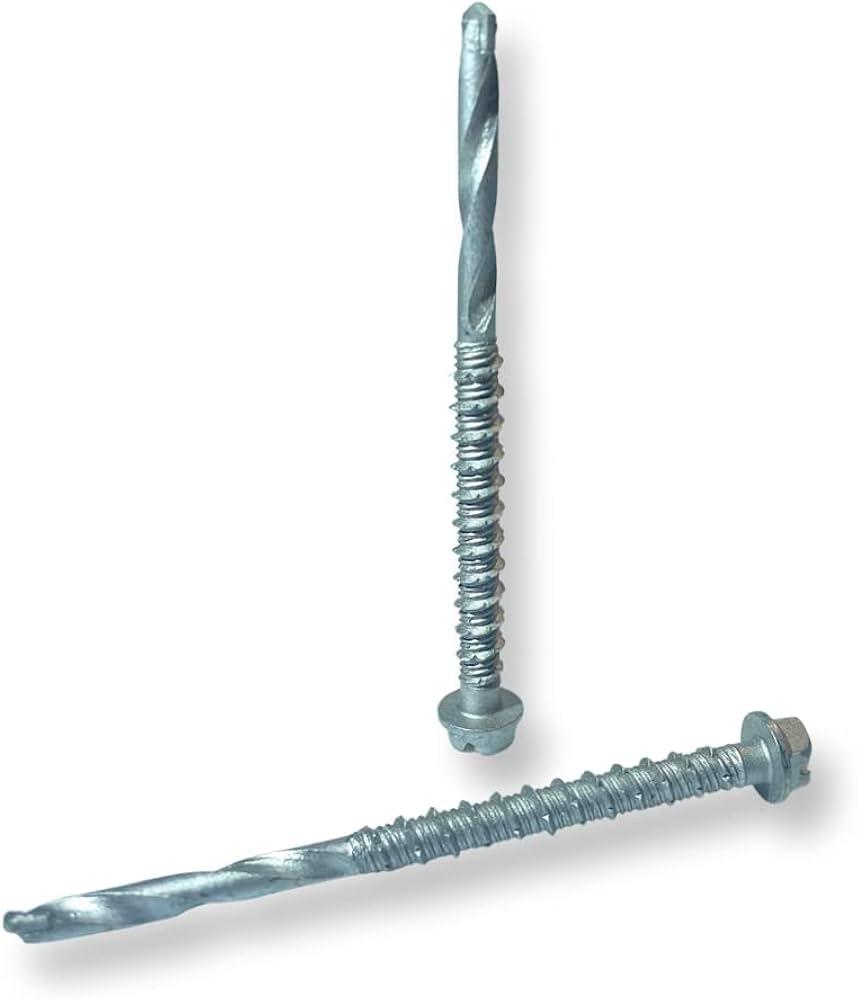 Concrete Screws, Amazon
Concrete Screws, Amazon
Description:
Concrete screws, also known as masonry screws, are specially designed fasteners for securing materials to concrete, brick, or stone surfaces. They are made from hardened steel and often coated with corrosion-resistant materials such as zinc or stainless steel to withstand outdoor and high-moisture conditions. These screws typically feature deep, aggressive threads that allow them to cut into masonry without requiring an anchor.
Applications:
- Mounting Fixtures:
- Used for attaching shelves, TV brackets, and heavy decor onto concrete or brick walls.
- Provides a strong grip without needing additional wall anchors.
- Commonly used in industrial and commercial settings for securing heavy installations.
- Framing:
- Helps in fixing wooden frames to concrete walls or floors in construction projects.
- Provides a stable foundation for door and window frames.
- Ensures long-term stability in load-bearing structures.
- Electrical Boxes:
- Used to securely mount switchboards, junction boxes, and electrical panels onto masonry surfaces.
- Prevents loosening due to vibrations or thermal expansion.
- Essential for both indoor and outdoor electrical installations.
Best Practices:
- Proper Drilling:
- Use a hammer drill with the correct masonry bit size to create a pilot hole slightly smaller than the screw diameter.
- Drill at least 1/4 inch deeper than the screw's length to allow space for dust and prevent jamming.
- Debris Removal:
- After drilling, blow out or vacuum the dust to ensure maximum holding strength.
- Failing to remove dust can reduce the screw's grip, causing it to loosen over time.
Lag Screws
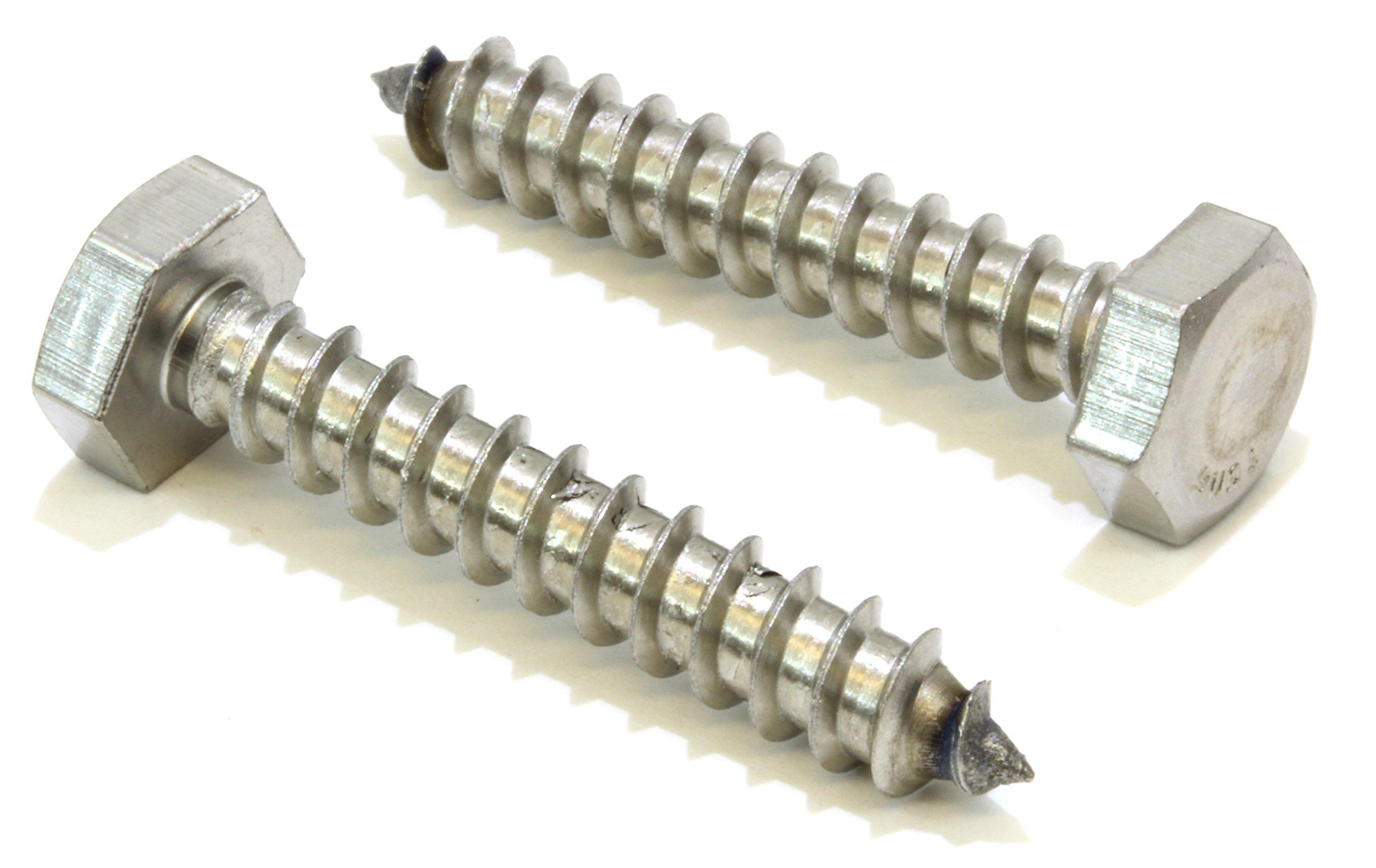 Lag Screws, Amazon
Lag Screws, Amazon
Description:
Lag screws, also called lag bolts, are heavy-duty fasteners with a hexagonal head designed for high-load applications. They are typically made of high-carbon steel or stainless steel, providing excellent strength and durability. Lag screws have a thick, coarse thread that ensures a firm grip in wood or masonry when combined with an anchor.
Applications:
- Deck Construction:
- Essential for securing wooden beams and posts in deck framing.
- Provides a durable and sturdy connection, preventing shifting over time.
- Used in outdoor wooden structures, such as patios and pergolas.
- Structural Framing:
- Used in timber framing for strong, load-bearing joints in construction projects.
- Helps secure wooden beams, trusses, and support columns.
- Common in large-scale construction where strength is a priority.
- Heavy Equipment Mounting:
- Ideal for anchoring heavy equipment to wooden floors or platforms.
- Used in industrial settings where machines need to be securely fixed.
- Prevents movement due to vibrations or mechanical stress.
Best Practices:
- Pilot Holes:
- Drill a pilot hole approximately 60-75% of the screw diameter to prevent splitting the wood.
- Use a drill bit matching the screw's core size for a snug fit.
- Washers:
- Always use a washer under the head to distribute pressure evenly and prevent wood damage.
- Helps in securing the connection while avoiding over-tightening.
Hex Head Cap Screws
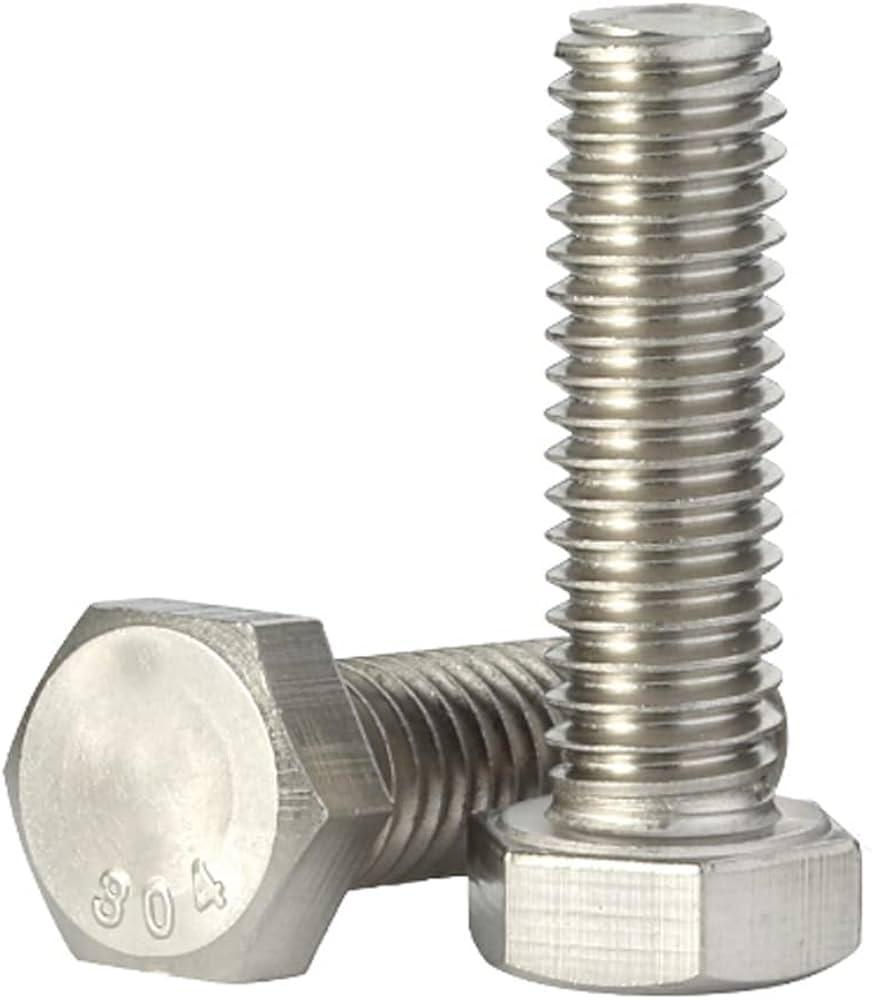 Hex Head Cap Screws, Amazon
Hex Head Cap Screws, Amazon
Description:
Hex head cap screws are high-strength fasteners with a six-sided head, commonly used in construction, automotive, and heavy machinery applications. They provide superior holding power and durability, making them ideal for applications where high torque is required. These screws are available in different materials, including stainless steel, carbon steel, and alloy steel.
Applications:
- Construction Projects:
- Used in structural steel connections, such as bridges and buildings.
- Provides a secure, high-load connection in heavy construction work.
- Often used in bolted connections that require high torque.
- Automotive Repairs:
- Found in engine components, suspensions, and body frames.
- Provides a strong and vibration-resistant fastening.
- Used in mounting brackets and securing axles.
- Industrial Machinery:
- Fastens heavy-duty machine parts securely.
- Used in assembly of presses, conveyors, and robotic systems.
- Resistant to high mechanical stress and extreme conditions.
Best Practices:
- Use a Wrench:
- Tighten using a socket wrench or power tool for a firm hold.
- Apply consistent pressure to avoid stripping the head.
- Torque Control:
- Follow the manufacturer's torque specifications to prevent over-tightening.
- Over-tightening can lead to thread damage or breakage.
Socket Screws (Allen Screws)
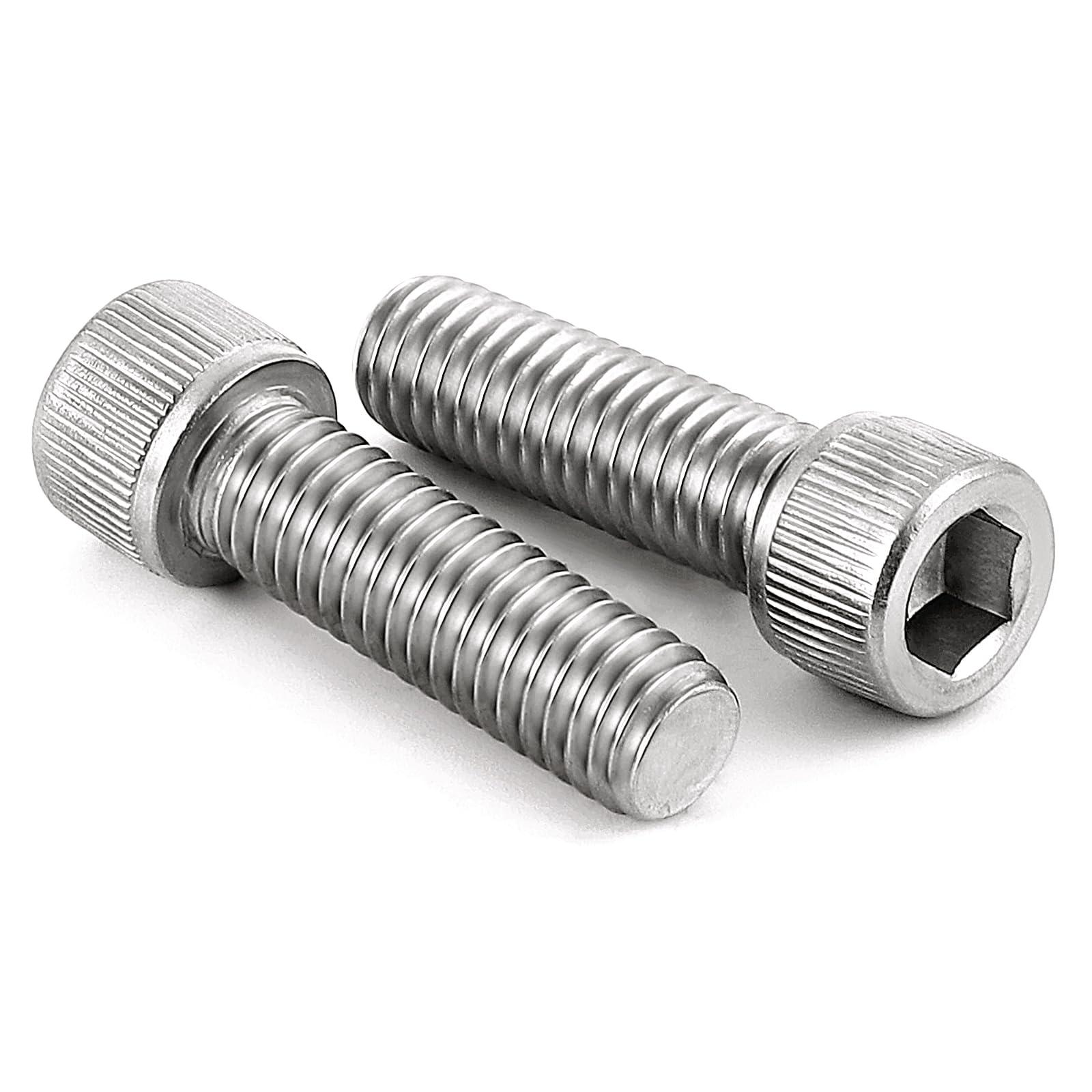 Socket Screws (Allen Screws), Amazon
Socket Screws (Allen Screws), Amazon
Description:
Socket screws, commonly known as Allen screws, feature a hexagonal recess in the head, requiring an Allen wrench (hex key) for tightening. These screws provide a clean and flush finish, making them ideal for applications requiring precision and aesthetic appeal.
Applications:
- Bicycle and Motorcycle Assembly:
- Used in securing handlebars, seat posts, and brake components.
- Provides a strong connection without protruding heads.
- Precision Machinery:
- Common in robotics, industrial equipment, and CNC machines.
- Offers tight and vibration-resistant fastening.
- Furniture Construction:
- Ideal for flat-pack furniture assembly (e.g., modular cabinets and office desks).
- Used in hidden fastenings for a sleek appearance.
Best Practices:
- Correct Wrench Size:
- Use the exact size Allen key to avoid stripping the recess.
- Lubrication:
- Apply anti-seize lubricant to prevent galling and improve longevity in metal-to-metal applications.
Carriage Bolts
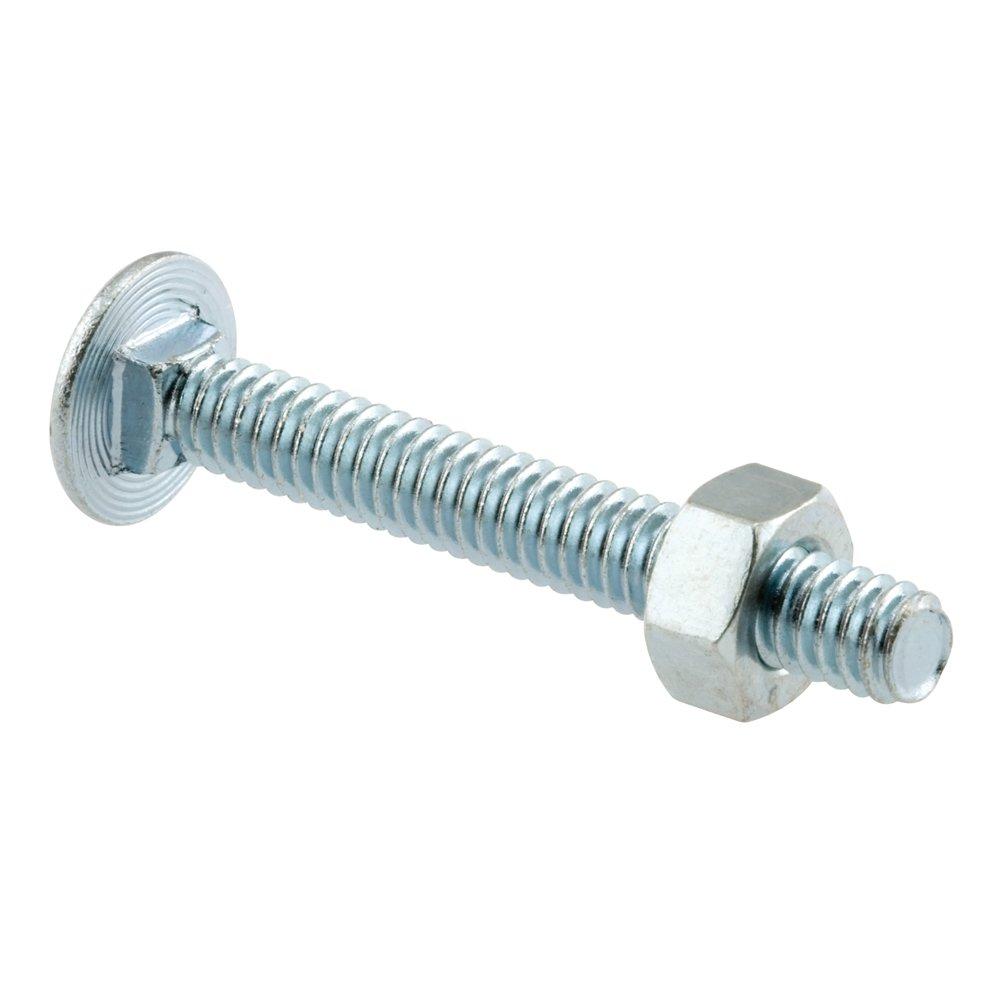 Carriage Bolts, Amazon
Carriage Bolts, Amazon
Description:
Carriage bolts have a rounded head with a square neck, preventing the bolt from rotating when tightened. They are primarily used in wooden and metal-to-wood connections, ensuring a secure, non-loosening fit.
Applications:
- Wooden Structures:
- Used in building decks, fences, and wooden bridges.
- Ensures strong, tamper-proof connections in outdoor applications.
- Metal-to-Wood Connections:
- Common in trailer frames, wagon assemblies, and wooden gates.
- Provides a tight grip without damaging the wood surface.
- Automobile Frames:
- Found in automobile chassis, truck beds, and railcars.
- Prevents loosening due to constant vibration.
Best Practices:
- Use Washers:
- Place flat washers under the nut to distribute pressure evenly.
- Tighten Securely:
- Use a wrench to properly tighten the nut and prevent loosening over time.
Choosing the Right Screw for Your Project
When selecting a screw, consider the following factors:
|
Factor |
Consideration |
|
Material |
Ensure the screw is compatible with the material. |
|
Load Capacity |
Select screws that can withstand the intended load. |
|
Head Type |
Choose the right head style for the tool being used. |
|
Thread Type |
Consider fine or coarse threads based on the application. |
Conclusion
Understanding different types of screws and their applications helps in making informed decisions for various construction, DIY, and industrial projects. By choosing the correct screw type and following best practices, you can ensure durability, strength, and efficiency in your work.
explore further
Latest from Contemporary ideas
More from Innovations
Resources
Dwello, for every home buyer, is a way to go from 'I feel' to 'I know', at no extra cost.




